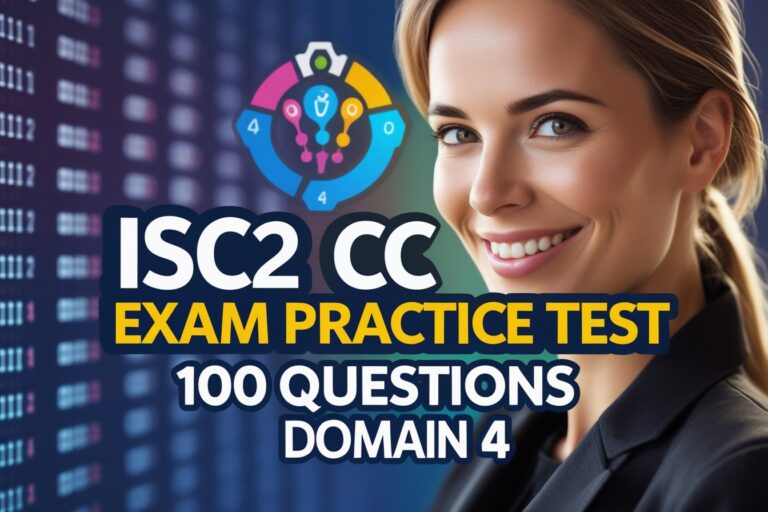1. Different ways the unguided signal can travel from the transmitter to the receiver is/are
i) Ground wave propagation ii) Sky propagation iii) Space propagation
A) i and ii only
B) ii and iii only
C) i and iii only
D) All i, ii and iii
2. In the electromagnetic spectrum, the frequencies in the range 30 kHz to 300 kHz are known as …….
A) Medium Frequencies (MF)
B) Low Frequencies (LF)
C) High Frequencies (HF)
D) Very Low Frequencies (VLF)
3. In the electromagnetic spectrum, the frequencies in the range 30MHz to 300MHz are known as ……..
A) High Frequencies (HF)
B) Ultra High Frequencies (UHF)
C) Very High Frequencies (VHF)
D) Super High Frequencies (SHF)
4. In the radio frequency spectrum, the frequency range of very low frequencies will be ……………..
A) 100Km to 10Km
B) 10Km to 1Km
C) 10^3Km to 100Km
D) 100M to 10M
5. In the radio frequency spectrum, the frequency range of very high frequencies will be …………..
A) 10 Km to 1 Km
B) 100 M to 10 M
C) 10 M to 1 M
D) 1 M to 10 Cm
6. For shortwave transmission, amateur and CB communication ………………. spectrum are used.
A) High Frequencies (HF)
B) Ultra-High Frequencies (UHF)
C) Very High Frequencies (VHF)
D) Super High Frequencies (SHF)
7. The application of super-high frequencies(SHF) 3GHz to 30GHz is …
A) Cellular phones
B) TV broadcasting
C) Satellite communication
D) AM radio broadcast
8. The medium frequencies (MF) from 300KHz to 30MHz are used for ……
A) Cellular phones
B) TV broadcasting
C) Satellite communication
D) AM radio broadcast
9. The signal occupying the range between 0.1mm and 700nm(nanometer) is called …….
A) electromagnetic signal
B) infrared signal
C) short signal
D) visible light
10. The various special kinds of communications performed using infrared signals is/are
i) In astronomy to detect stars ii) For guidance in weapon systems iii) FM broadcasting iv) TV remote control
A) i, ii and iii only
B) i, ii and iv only
C) ii, iii and iv only
D) i, iii and iv only
11. …………. is a special type of electromagnetic radiation that has a wavelength in the range of 0.4 to 0.8 micrometers.
A) electromagnetic signal
B) infrared signal
C) short signal
D) visible light
12. In wireless transmission ………………. have the frequencies between 10KHz to 1 GHz.
A) EM waves
B) Microwaves
C) Radiowaves
D) Infrared
13. Radio frequencies below …………. are more suitable for omnidirectional applications.
A) 30GHz
B) 3GHz
C) 1GHz
D) 300MHz
14. Which of the following electromagnetic spectrum includes radiowaves?
i) High Frequencies (HF) or short waves
ii) Very High Frequency (VHF)
iii) Ultra High Frequency (UHF)
iv) Super High Frequency (SHF)
A) i, ii and iii only
B) i, ii and iv only
C) ii, iii and iv only
D) i, iii and iv only
15. State whether the following statements are True or False for the characteristics of the types of radio waves.
i) The cost of high-power single frequency is higher than other
ii) The bandwidth capacity of the spread spectrum is 2-6 Mbps.
iii) The installation of low-power single frequency is simple than other
A) i and ii only
B) ii and iii only
C) i and iii only
D) All i, ii and iii
16. Different types of radio waves used for computer network applications are ……
i) Low-power, single frequency
ii) High-power, single frequency
iii) High power, multiple frequencies
iv) Spread spectrum
A) i, ii and iii only
B) i, ii and iv only
C) ii, iii and iv only
D) i, iii and iv only
17. ………………… are basically electromagnetic waves having frequencies between 1 and 300 GHz.
A) EM waves
B) Microwaves
C) Radiowaves
D) Infrared
18. Which of the following statements is correct for the characteristics of terrestrial Microwave systems?
i) It supports a bandwidth from 1 to 10 Mbps
ii) The frequency range used from 4-6 GHz and 21 to 23 GHz
iii) Line of sight requirements make installation easier
A) i and ii only
B) ii and iii only
C) i and iii only
D) All i, ii and iii
19. State whether the following statements are True or False about the Microwave link.
i) High maintenance as compared to cables
ii) No, adverse effects such as cable breakage, etc.
iii) Repeaters can be used. Hence the effect of noise is reduced.
A) i and ii only
B) ii and iii only
C) i and iii only
D) All i, ii and iii
20. Which of the following is/are the applications of Microwave Transmission?
i) Point-to-point and point-to-multipoint transmission
ii) In cellular phones
iii) In satellite networks
iv) In the wireless LANs
A) i, ii and iii only
B) i, ii and iv only
C) ii, iii and iv only
D) i, iii and iv only
Answers
1. D) All i, ii, iii and iv
2. B) Low Frequencies (LF)
3. C) Very High Frequencies (VHF)
4. A) 100Km to 10Km
5. C) 10 M to 1 M
6. A) High Frequencies (HF)
7. C) Satellite communication
8. D) AM radio broadcast
9. B) infrared signal
10. B) i, ii and iv only
11. D) visible light
12. B) Microwaves
13. C) 1GHz
14. A) i, ii and iii only
15. D) All i, ii and iii
16. B) i, ii and iv only
17. B) Microwaves
18. A) i and ii only
19. B) ii and iii only
20. C) ii, iii and iv only









